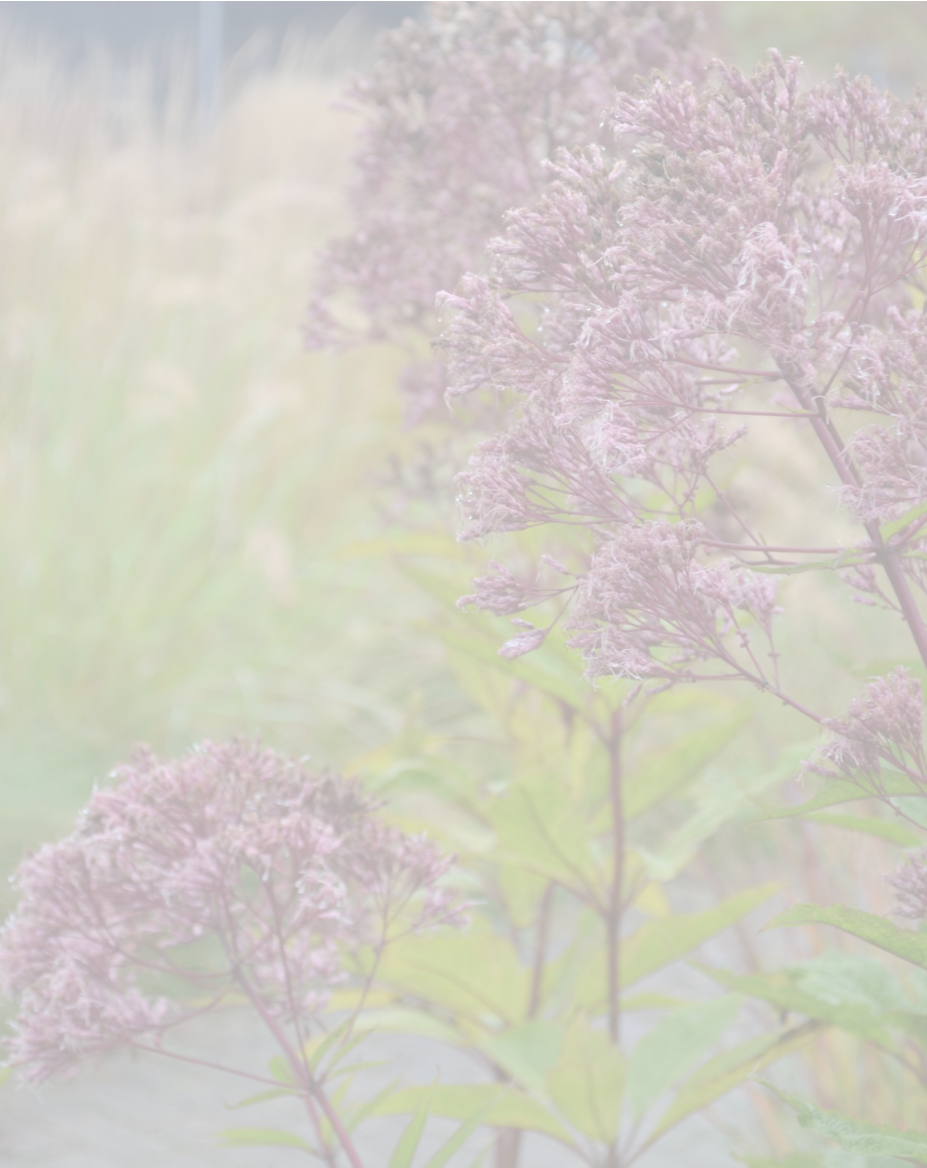











Are you interested in a new ecologically inspired approach which creates landscapes that are
· beautiful and multifunctioning
· built on sustainable and energy ‘wise’ principles
· visually work as an artful interpretation of nature rather than ‘decorative plant collections’ ?
· can save you money, time and effort in the long run ?
WHY A NEW APPROACH?
Due to human development, our natural environments are increasingly under threat, resulting in loss of
native plants and habitat, decline in pollinators for our crops and loss of healthy soils, clean air and
water.
Unfortunately, our traditional home landscape practices (use of pesticides, synthetic fertilizers, exotic
and invasive plants, excess machinery, etc.) are part of the problem as their focus is mostly on creating
beauty and comfort for people, often at the expense of the other creatures inhabiting the planet.
WHAT IS CHANGING?
More and more people now realize that nature is not just “nice to have” but literally is our life support
system. Fortunately, a growing number of us in the landscape industry have embraced greener, ‘Close
to Nature’ practices, which I would love to share with you.
HOW DOES IT DIFFER FROM TRADITIONAL LANDSCAPE PLANNING?
While I am not a purist in my approach, I prefer to design with native plants over exotic ornamentals
(like lilacs and peonies), as natives offer nectar, pollen and seed sources as well as an overwintering
habitat for our beneficial pollinators and wildlife when managed properly. Further I educate my clients,
if interested, on the importance of building healthy soils, managing storm water runoff, using on-site
green resources (compost, leaf mulch), alternatives to traditional turf grass lawn and ‘greener’ fall and
spring cleanup practices. See picture examples from my home garden and further reading below.
Visually speaking, these ‘Close to Nature’ landscapes are often layered gardens with native ground
covers underneath shrubs and trees. They consist of a variety of plants instead of individual plants in
isolated, heavily mulched planting islands. When set into a strong visual framework and layout with
easy to read patterns, native landscapes are just as beautiful, if not more, as they reflect the beauty of
nature as well as the homeowner’s environmental values.
INTRIGUED AND CURIOUS TO HEAR SPECIFICS?
During our initial consultation
YOUR SPECIFIC OBJECTIVES AND GOALS ALWAYS COME FIRST
and then, if you're interested, we can discuss how a ‘Close to Nature’ approach can aid in creating and
managing your future landscape.
I am looking forward to our landscape conversation!
‘Close to Nature’
Landscaping
Pictures from Silvia’s own ‘Close to Nature’ gardens

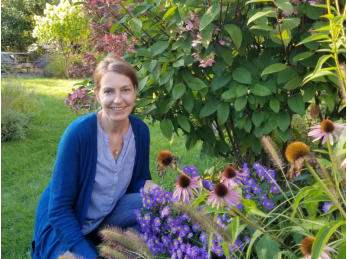
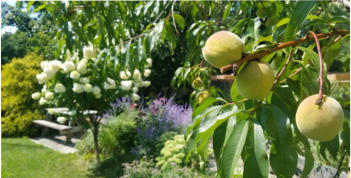





Flowering crabapple with insect pollinator Salvaged Adirondeck chairs in no-mow grass patch Native asters in fall
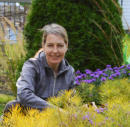


Homemade screening trellis from
salvaged apple tree branches with
native bluestem grasses
Raspberry patch (to the left), peagravel patio anchored by native Eastern redbud tree

Just enough lawn for the kids to play ball :)
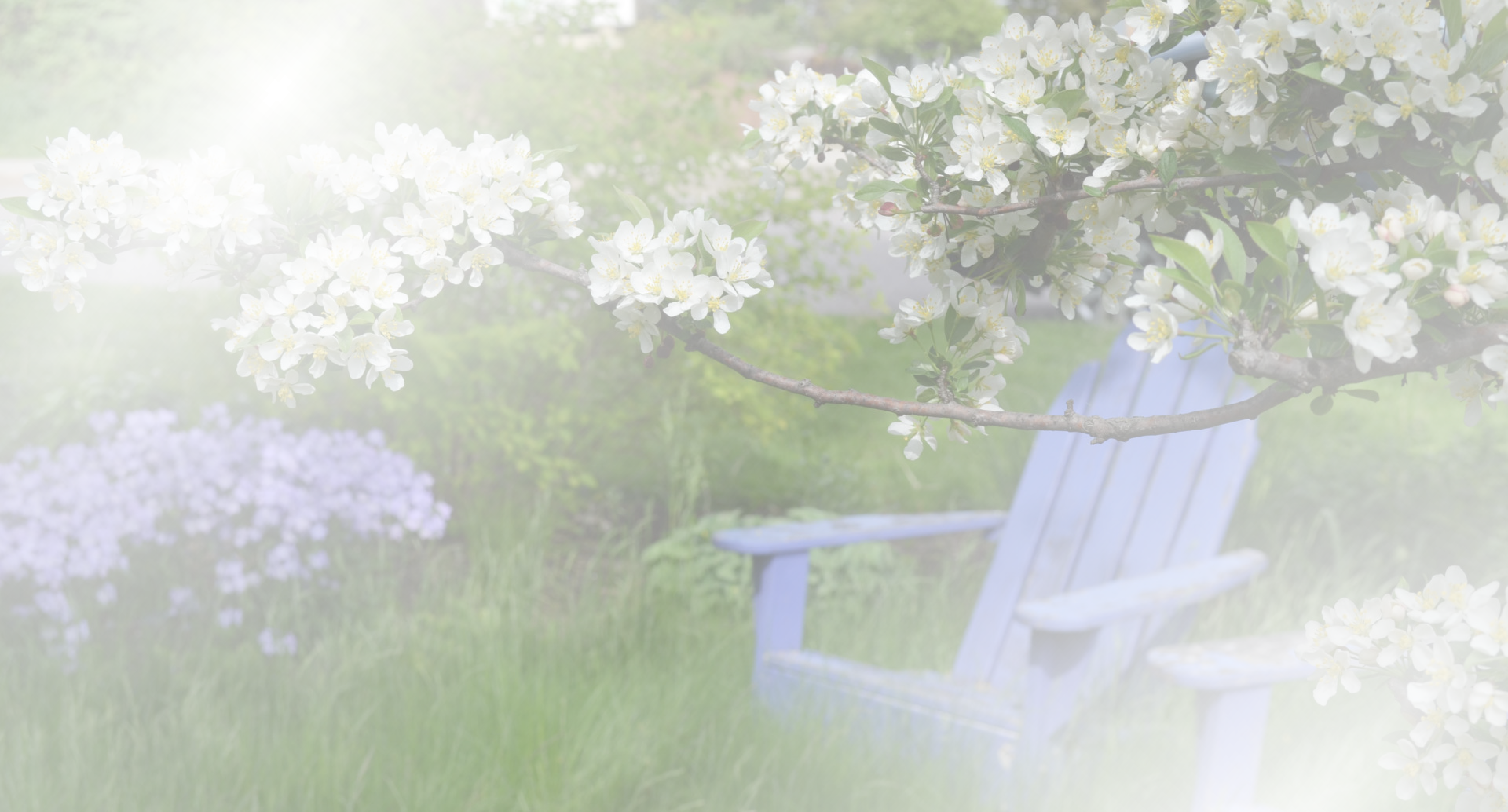
Article links to learn more about ecological inspired gardens and landscape planning:
•
How to Turn Your Yard Into an Ecological Oasis
https://www.yesmagazine.org/environment/2020/02/07/yard-sustainability-native-plants/
•
Native Plants for the Small Yard; Easy, Beautiful Home Gardens that Support Local Ecology
This booklet includes:
- A description of the connection between native plants and local ecology;
- Guidance on flower garden designs for your yard, including nine different
design templates you can use and/or modify as you wish;
- Advice on installing and maintaining a flower garden; and
- Information on the best native plants for small spaces, as well as visual guides
for common yard weeds and invasive plants.
https://lgnc.org/pdfdocs/brandes_book.pdf
•
A Call for Backyard Biodiversity
Acclaimed author and ecologist Douglas Tallamy explains the reasons behind the decline of
native flora and fauna, and how we can work to reverse it from our own backyards
https://www.americanforests.org/magazine/article/backyard-biodiversity/
•
Converting a small Front Yard into Prairie Beds
Garden writer and designer Benjamin Vogt chronicles the conversion from his traditional
suburban Nebraska front yard into a prairie
https://www.monarchgard.com/thedeepmiddle/converting-a-small-front-yard-to-prairie-beds
Handwoven willow garden gate with developing native hornbeam arch and hedge
Mix of edibles, pollinator friendly plants and ornamentals








